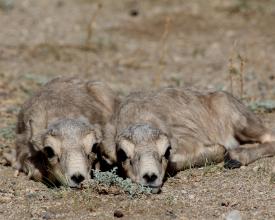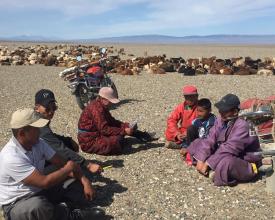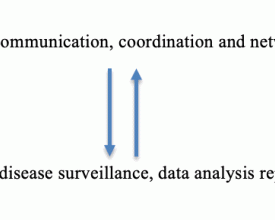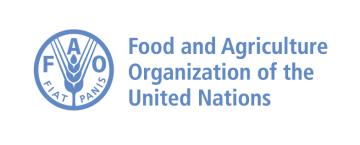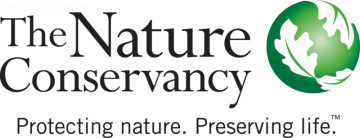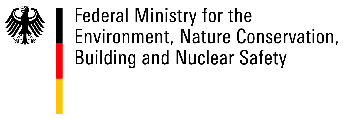Integrated livestock and wildlife disease surveillance and response supports Saiga conservation and livelihoods in Mongolia
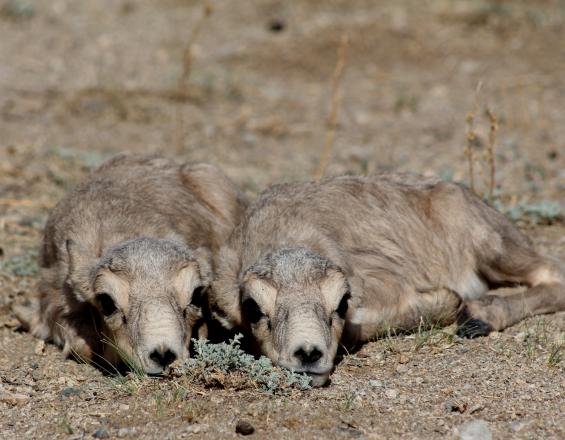
Integrated livestock and wildlife monitoring, surveillance, and response are essential to guide the implementation of disease control measures to protect biodiversity and livelihoods. Improved wildlife surveillance and analyses of disease outbreaks in Mongolia showed that wildlife were victims of livestock disease spillover, not the source of the outbreaks as had been previously thought. This avoided mass culling of wildlife and moved towards wildlife-friendly disease control efforts. Strategies for both livestock and wildlife are now being designed to control and eradicate Peste des Petits Ruminants (PPR) virus in Mongolia. The incorporation of wildlife is now recognized as essential in global PPR eradication strategies. With saiga sensitivity to disease epidemics more fully appreciated, increased trade protections through the Convention on International Trade in Endangered Species of Wild Fauna and Flora (CITES) were implemented, which will further help safeguard the Mongolian saiga’s survival.
Context
Challenges addressed
This solution addresses challenges to biodiversity conservation of saiga and other wild ungulates, as well as the wild carnivores that prey and rely on these animals as their food source. Improved surveillance and understanding of disease epidemiology leads to more appropriate interventions for disease control which addresses challenges to livestock health, with knock-on benefits to the livelihoods and economic security of the herders whose animals share the steppe environment with wild ungulates.
Location
Process
Summary of the process
Developing multi-sectoral communication and collaboration networks and capacity building across these sectors from local to national levels are essential components for successful wildlife surveillance for One Health intelligence and implementation of effective solutions in coordination with local communities.
Building Blocks
1. Multi-sectoral coordination for monitoring diseases at the wildlife-livestock interface
Building partnerships across the emergency management, animal health and environment/ wildlife sectors is an important first step for planning and implementation of wildlife surveillance to ensure results are used to guide science-based policy and disease control mechanisms. Convening multi-sectoral meetings to open discourse and share information on the challenges and opportunities to monitoring and management of disease at the wildlife-livestock interface, and to develop smooth communications and trust between and across sectors as well as multi-sectoral surveillance and response networks is critical.
Enabling factors
Financial support for coordination meetings; openness of host government to coordination between environment/ wildlife and livestock health sectors; time and patience
Lesson learned
Coordination and support from the government is essential from the beginning to ensure support for surveillance, understanding of what is being implemented and the goals/ outcomes, good coordination between sectors, engagement to build local capacity and export samples for testing where necessary, host government willingness to be open about diagnostic findings and motivation to amend disease control strategies based on findings.
Collection of baseline wildlife health data
Conducting monitoring and surveillance in wildlife (both healthy populations and those showing signs of disease) and routine serological testing for exposure to pathogens frequently shared with livestock as well as more in depth diagnostics e.g. PCR/ NGS on sick/ dead animals support comprehensive understanding of the circulation of pathogens in these populations, geographic and temporal distributions and time-lines of exposure and non-exposure of different populations. Integration of this data with livestock surveillance data contributes to understanding of the epidemiology of diseases and the dynamics of disease outbreaks, including the potential source, to implement effective science-based control strategies.
Enabling factors
Financial support for surveillance; human capacity for surveillance, and data management and analysis; access to sites to conduct surveillance; cold chain/ sample storage capacity; capacity for accurate field and/ or laboratory based diagnostics; good coordination between environment/ wildlife and livestock health sectors; openness for result sharing by host government
Lesson learned
Coordination and support from the government is essential from the beginning to ensure support for surveillance, understanding of what is being implemented and the goals/ outcomes, good coordination between sectors, engagement to build local capacity and export samples for testing where necessary, host government willingness to be open about diagnostic findings and motivation to amend disease control strategies based on findings. Wildlife health is under-funded in all countries compared with livestock and human health sectors and external donor support is almost certainly required for success of such programs in LMICs and MICs. It takes considerable time and patience to develop truly functional, localized wildlife health surveillance networks, integrated with other national surveillance networks
Local Capacity Building for Management of Disease at the Wildlife-Livestock Interface
Many nations have limited funding for wildlife health surveillance so developing this capacity and the knowledge of wildlife health and disease epidemiology as it pertains to the wildlife-livestock interface at the local, provincial and central levels is vital for sustained surveillance and for the true value of this surveillance to be realized including its use to implement wildlife-friendly interventions that also support improved livestock health.
Enabling factors
External and governmental financial support for development of wildlife health sector including surveillance and diagnostics; interest of host government to develop wildlife health capacity; time and personnel availability to be trained
Lesson learned
Developing local capacity for wildlife health surveillance is critical for sustainability of such efforts and sustained One Health benefits
Implementation of Effective Control Strategies for Disease Spillover From Livestock to Wildlife
Multi-sectoral coordination, and communication and coordination with local communities, are essential to clearly and simply share findings of surveillance and why specific management strategies have been developed and are recommended for implementation. This would include, for example, vaccination of domestic livestock for PPR in areas where their range overlaps with that of significant wildlife populations, protecting livestock health, and reducing the risk of spillover to wild ungulates.
Enabling factors
Financial support for vaccination or other management strategies; good coordination and communication between sectors; good communication and relationships with local communities of herders; access to vaccines and appropriate storage capability; human capacity to implement effective vaccination campaign.
Lesson learned
Open lines of communication between relevant government sectors and between government and communities as well as and their understanding of the disease epidemiology is essential to implement effective disease control strategies that address the concerns of all stakeholders involved.
Impacts
In the past, the role of wildlife in livestock disease outbreaks was misunderstood. During Foot and Mouth Disease (FMD) outbreaks in 2000, Mongolian gazelle were viewed as reservoirs of the disease and subjected to mass culling. Temporal & spatial analyses supported by international wildlife health experts showed that gazelle were in fact the victims of spillover of the virus from livestock, improving officials' understanding of FMD epidemiology. Mass destruction of wildlife was recognized as an ineffective control measure, and conservation-friendly approaches adopted. In 2016, PPR was diagnosed in domestic livestock, spread to wild ungulates, and killed >80% Mongolian Saiga. Wildlife surveillance identified wildlife as victims and not the original source of infection. Instead of culling wildlife, expert advisors, environmental & veterinary sectors coordinated to vaccinate livestock and minimize spread of PPR, saving the critically endangered Mongolian Saiga population, which has rebounded to 8,500 individuals.
The realization of the importance of wildlife and their ecological role in preserving the steppes is a great change in the veterinary sector. Partners are now working to design effective PPR control strategies for both livestock and wildlife in Mongolia and to incorporate wildlife into global PPR eradication strategies (see FAO/ WOAH guidelines below).
Beneficiaries
- Herding communities who rely on livestock for their economic stability and livelihoods
- Wild ungulates
- Wild carnivores who rely on wild ungulates for food
- All who rely on the integrity of the Mongolian steppe ecosystem

